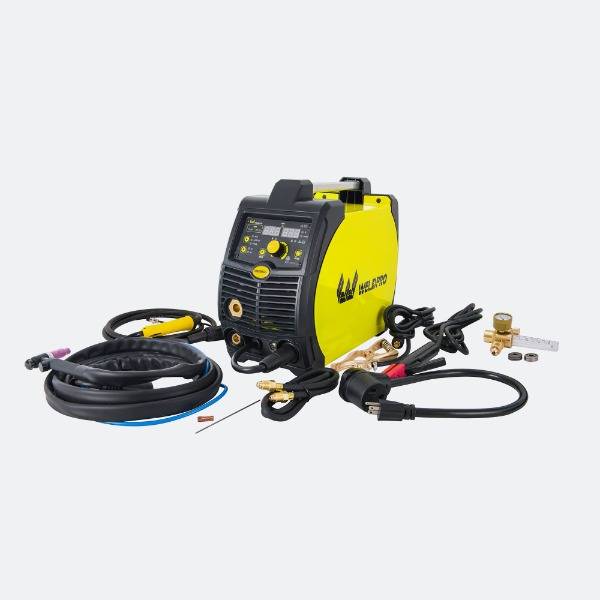 Where To Buy
Where To Buy  Sign In
Sign In-
Cart
Loadding...
In many industries, welders face challenges when working far from the power source or in hard-to-reach areas.
When it comes to heavy-duty welding environments, consistent wire feeding is essential for quality and efficiency. That’s where the IGBT Inverter Split Wire Feeder Industrial MIG MAG Welder plays a vital role. Built for durability and stability, this system enables welders to operate smoothly across large-scale worksites without compromising arc performance. Combined with the IGBT Inverter Digital Double Pulse MIG MAG Welder, it offers a complete welding solution that enhances feed accuracy, temperature control, and operator flexibility.
In many industries, welders face challenges when working far from the power source or in hard-to-reach areas. The split wire feeder setup helps overcome these limitations by separating the wire feed mechanism from the main unit. This reduces weight at the torch, improves maneuverability, and ensures steady feeding regardless of cable length or position.
Smoother Wire Delivery, Better Weld Results
A common problem in traditional integrated systems is wire feeding interruptions—especially when using longer cables or feeding soft wires like aluminum. The split feeder system minimizes this risk by providing a direct and responsive delivery path, reducing chances of backlash or deformation.
For operators, this means fewer stops, cleaner welds, and reduced frustration. Whether you're performing vertical welds on construction beams or navigating tight spaces in complex assemblies, stable wire feed helps maintain arc consistency and minimizes defects.
Paired Precision with Pulse Control
When used in conjunction with the double-pulse MIG/MAG welder, the split feeder setup truly shines. The digital pulse control regulates heat input, while the feeder ensures the wire moves in harmony with the welding arc. This synchronization supports clean starts, consistent penetration, and uniform bead profiles across various material types.
Suited for Industrial Demands
Heavy industry, structural fabrication, and shipbuilding often require welding across large-scale platforms where portability and range matter. The split wire feeder’s ability to operate at a distance gives welders freedom to move while maintaining steady input from the source.
Additionally, the unit’s durable casing, reinforced connectors, and cable strain relief design make it ready for harsh working conditions. It’s a practical solution for outdoor use or environments with limited access to stationary equipment.
Operator Comfort and Flexibility
The reduced torch-side weight offered by the split design makes long shifts more manageable. With less strain on the welder’s arm and shoulder, operator fatigue decreases, improving concentration and accuracy. It’s a small detail that makes a big difference in daily productivity.
Meanwhile, the intuitive controls and digital display of the main unit help welders quickly select wire speed, voltage, and pulse parameters. Even less experienced operators can benefit from stored presets and automatic synchronization, speeding up job changeovers.
Broad Material Compatibility
From mild steel to stainless, from low-carbon metals to aluminum alloys—the system handles a wide range of materials with less setup. The independent wire feed control allows for fine adjustments based on wire diameter, material thickness, and weld position.
For example:
Mild steel frames benefit from stable arc behavior and continuous feed.
Stainless kitchen equipment needs precise low-heat settings for a clean appearance.
Aluminum panels require soft wire feeding with less tension loss.
With a properly configured double pulse welder and split feeder, transitioning between these applications becomes far more seamless.
This system supports modern fabrication teams with tools that prioritize control, mobility, and long-term durability. Whether in workshops or on-site, the split wire feeder design is a reliable partner for building strong, precise, and repeatable welds.
Subscribe to Our Newsletter!